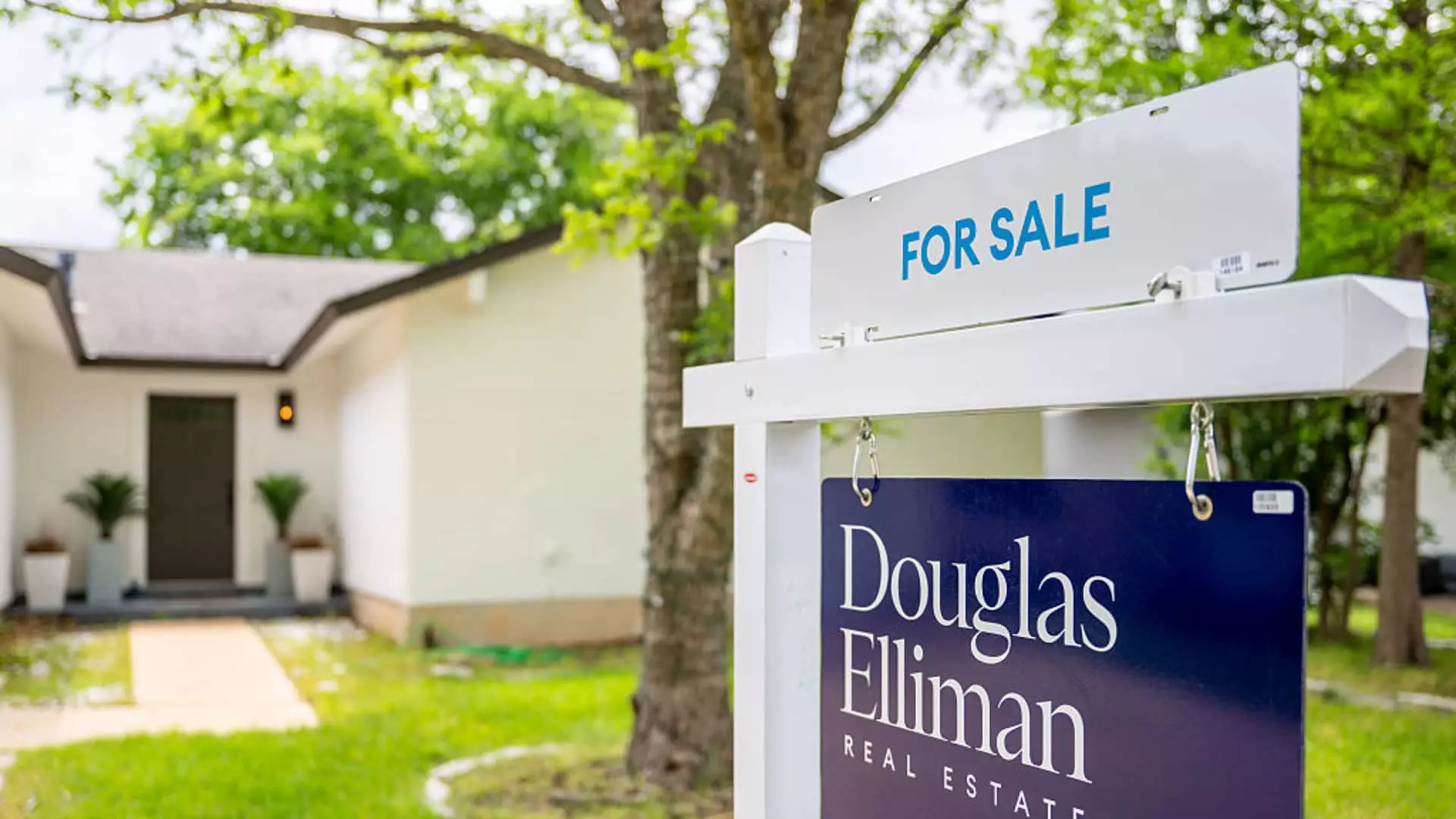In recent months, the American housing market has shown signs of stagnation that can’t be ignored. Data from May indicates that sales of previously-owned homes crept up by a bare 0.8% from April, arriving at a seasonally adjusted annualized rate of 4.03 million units, according to the National Association of Realtors. While a minor uptick sounds cheerful on the surface, it shrouds a deeper malaise: sales are actually 0.7% lower compared to the same time last year. This speaks volumes about the persistent challenges facing potential homebuyers and sellers alike.
Analyzing the regional markets reveals disparities that could point to critical underlying issues. The Northeast displayed the most resilience in sales, climbing by 4.2% month-over-month. In contrast, the West witnessed a stark decline of 5.4%. It’s rather ironic that the most expensive region in the country finds itself struggling. This scenario shines a spotlight on how rising housing costs, coupled with climbing mortgage rates, can suppress buyer interest, creating an unflattering dichotomy in home sales.
The Effects of Stubborn Mortgage Rates
The impact of mortgage rates on sales is a central theme in the current housing narrative. With the average rate for a 30-year fixed mortgage hovering over 7% as of April, it is no wonder that the housing market remains subdued. Lawrence Yun, the chief economist at NAR, succinctly highlighted that these high mortgage rates discourage buyers and result in diminished transaction numbers. A shift in interest rates could be the remedy the market desperately needs; lower rates generally stimulate buyer activity and lead to increased home sales.
However, let’s dig deeper into the statistics. There was a notable increase in housing supply; more homes became available by over 20% compared to last year. Yet despite this increase, there remains a grappling tension: a 4.6-month supply of homes is still a fraction of the historic averages. It glimmers like a mirage but stops short of satiating the market’s thirst for accessible housing options, resulting in continued pressure on prices.
The Heart of the Affordability Crisis
Median home prices reached a jaw-dropping average of $422,800 in May—an increase of 1.3% from the previous year. Such figures paint a daunting picture for average American families who aspire to homeownership. It’s troubling that a staggering 28% of homes sold in May were transacted above their list price, signifying a tight market where demand persists despite affordability issues.
Consequently, it seems as if the housing market caters more to upper-tier buyers than to first-time purchasers. In this trending narrative, however, what stands out is the drop in the number of first-time buyers, now accounting for just 30% of all transactions. This underlines the affordability crisis, suggesting a widening gap between home ownership and those who can afford it, ultimately skewing market dynamics.
Those struggling in the $1 million-plus segment are perhaps feeling the spillover effects of stock market volatility, with fewer homes selling in that price range. This is particularly worrisome as the number of cash transactions slightly increases. It seems the affluent may be cashing in on properties while those with traditional financing face significant hurdles.
Looking Ahead: A Cautious Outlook
For home sellers and those aspiring to enter the housing market, the outlook is uniquely precarious. Homes are staying on the market longer—27 days compared to 24 days a year ago. This change could indicate a cautious sentiment among buyers reluctant to leap into a volatile market.
Ultimately, while the data suggests minor improvements, the larger narrative reflects a housing market caught between twin pressures: persistently high mortgage rates and an affordability crisis that sees first-time buyers excluded from what once was the American dream of homeownership. This analysis raises critical questions about structural changes needed to revitalize the market and serve the average American, urging policymakers to engage in constructive discussions around housing policy reform.

